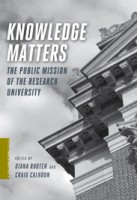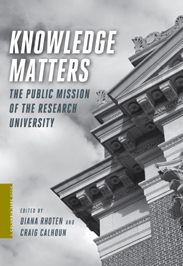 Editors: Diana Rhoten and Craig Calhoun
Editors: Diana Rhoten and Craig Calhoun
Publisher: Columbia University Press – 539 pages
Book Review by: Deekay Daulat
In China and Africa there is “massive expansion” of universities. In Latin America “they are growing in ways central to economic development.”
But in the United States, “universities are experiencing budget cuts.” And in Europe “universities built as state institutions are being told to raise money from private sources…”
These are the stark economic contrasts the editors of this book point out with regards to universities in some parts of the developing world versus those in the developed regions, particularly in the U.S. and Europe.
While other countries and regions of Asia are not mentioned, there is proof that the number, size, and facilities of universities in India, with about a seventh of the global population, are growing.
This book deals with issues relating to the public mission of universities. One of these issues is research that creates new knowledge. A related mission is the dissemination of such knowledge. Another mission is creating equal opportunity for all to get an education. In each instance, money is required, but whose money is used and how is new money to be raised to fulfill all aspects of its public mission?
Some of the important questions the editors raise in this book and attempt to find answers to are the following:
- When universities educate students, is this simply a private benefit because it advances their careers, or is it a public good because informed citizens are integral to democracy and essential for national economic development?
- How important is equal opportunity?
- What are the effects of hierarchy?
- Who pays now and who will pay tomorrow?
- Should the results of academic research be private property for sale or openly available for public use?
- Who sets university research agendas?
- What kids of scholarship flourish and what kinds suffer?
- Should producing competitive research take priority over educating competent students?
- Do international rankings distort these and other university priorities or provide needed objective assessments?
- What are the universities’ roles and responsibilities in terms of knowledge creation and dissemination today? What about tomorrow?
Twenty-three experts, including the book’s two editors, from Africa, Asia, Europe, North America and South America have contributed chapters to this book on these and other issues in their particular countries and regions. They report their findings, make their observations, share their insights and express their views on the conflict between public and private challenges, demands and realities.
Tables provided through the chapters provide interesting comparative educational data worldwide among countries. For example, in Table 5.3 on pages 172-177 on the number of college graduates in 2004, the United States was No.1 with 2,473,299, China was No.2 with 1,948,080, Russia was No.3 with 1,706,156, and Japan was No.4 with 1,051,262.
The Notes sections at the end of each chapter provide references to materials that readers can consult, to shed more light on particular issues.
This is an informative book on the responsibilities of universities towards the public on the one hand, and on the other, their needs to raise money from private sources if public funding is insufficient to fulfill their public mission. It looks at situations in different countries and regions of the world and provides educational comparisons. The editors Diana Rhoten and Craig Calhoun have done a great job of gathering, organizing and presenting the material contained in it. It’s a good read.
Diana Rhoten is the founder and director of the Knowledge Institutions Program and the Digital Media and Learning Project at the Social Science Research Council. She has published in a range of academic journals and advises cultural, scientific, and educational Institutions on issues of organizational design, creative collaboration, and adaptive change.
Craig Calhoun is president of the Social Science Research Council and University Professor of the Social Sciences at New York University. He has served in a variety of academic leadership positions, including as a dean, and conducted research in many international settings. His most recent book is an edited collection, Robert K. Merton: Sociology of Science and Sociology as Science (Columbia).







